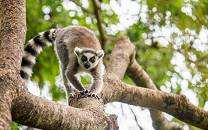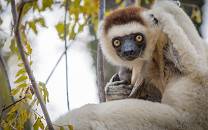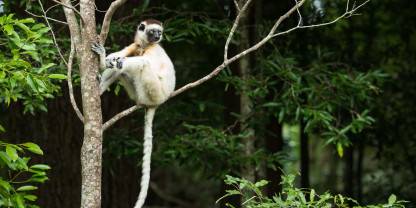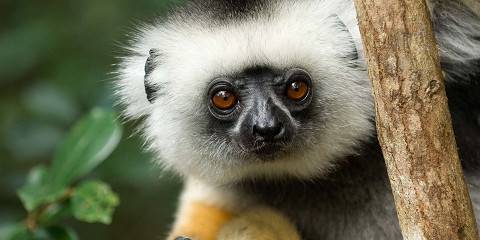Ifotaka Forest is a community-run reserve set in the remote Mandrare River Valley. It protects a combination of tamarind gallery forest and . Both forests are sacred to the local Antandroy people, who take visitors on guided walks that offer insights into their culture plus a good chance of seeing lemurs. The only realistic base for a visit is Mandrare River Camp, a traditional that operates on an all-inclusive basis.

-
Best Time To Go
- April to November (Less rain and humidity)
-
High Season
- July to November (High-season rates apply)
-
Size
- 220km² / 85mi²
-
Altitude
-
67-404m /220-1,325ft (approximate)
 View Photos
View Photos
 View Photos
+24
Photos
View Photos
+24
Photos
Pros & Cons
- Community reserve mixing culture and nature-based activities
- Exclusive offering a real bush experience
- Great lemur viewing
- Night walks available in the
- There’s nowhere to stay other than the tented camp, which is expensive
- Not very accessible
Wildlife
Ifotaka Forest is home to two lemur species that are active by day. These are the ring-tailed lemur (large groups of which occur in the gallery forest) and Verreaux’s sifaka (found in both the gallery and ). Ifotaka also supports three types of lemur that are active at night: white-footed sportive lemur, grey mouse lemur and grey-brown mouse lemur. Birdlife includes several species that are endemic to the spiny forest of southern Madagascar.
More about Ifotaka’s wildlifeScenery
Visits are based out of Mandrare River Camp, which stands in a riverside gallery forest dominated by tamarind trees. Several very scenic spots can be found close to camp, as well as some impressive stands of ancient baobab trees. The surreal , which is unique to this part of Madagascar, is most famous for its bizarre octopus tree, which can grow up to 10m/33ft high.
Activities
Several guided activities are available. An easy walk through a large tamarind forest opposite Mandrare River Camp comes with an excellent chance of seeing large troops of charming ring-tailed lemurs. Walks into the tend to focus more on the region’s unique succulent flora, but you will also pass ancestral Antandroy tombs and should see the acrobatic Verreaux’s sifakas. Other activities include night walks, local village visits, bird watching and traditional dances below giant baobab trees.
Weather & Climate
The climate in Ifotaka Forest is hot and quite dry. There is, however, a Wet season from November to March. This is also the hottest time of the year, with an average daytime temperature of 27°C/81°F. The cooler Dry season from April to October is overall more comfortable.
More about the weather and climateBest Time To Visit
The Dry season (April to October) is a good time to visit and so is November, the beginning of the Wet season. Mandrare River Camp stays open through December, but this month sees a lot of rain. The shoulder months of April, October and November are particularly lovely as the weather is pleasant, and reptiles and some mammals are more active than in the cooler Dry season months. Mandrare River Camp is closed during the rains from January to late March.
More about the best time to visit



